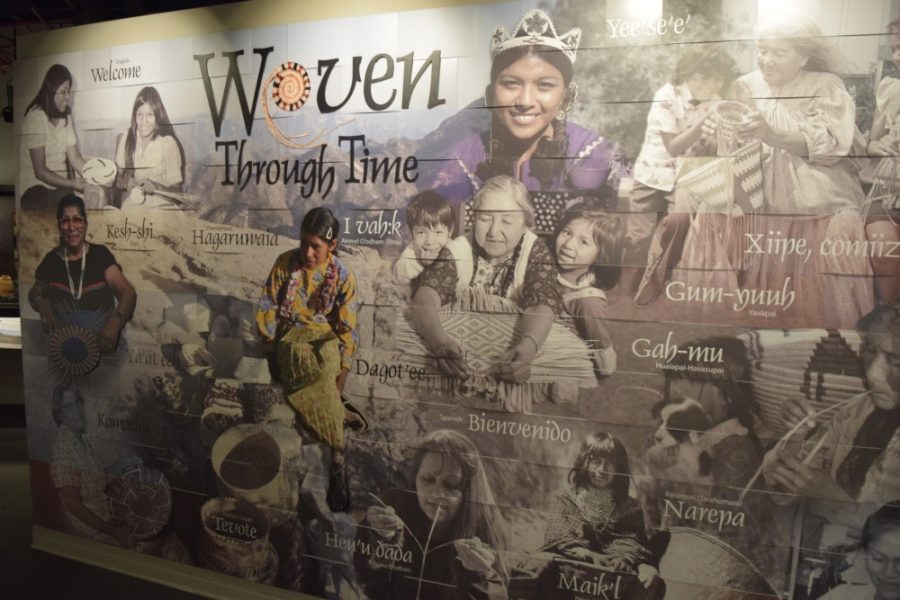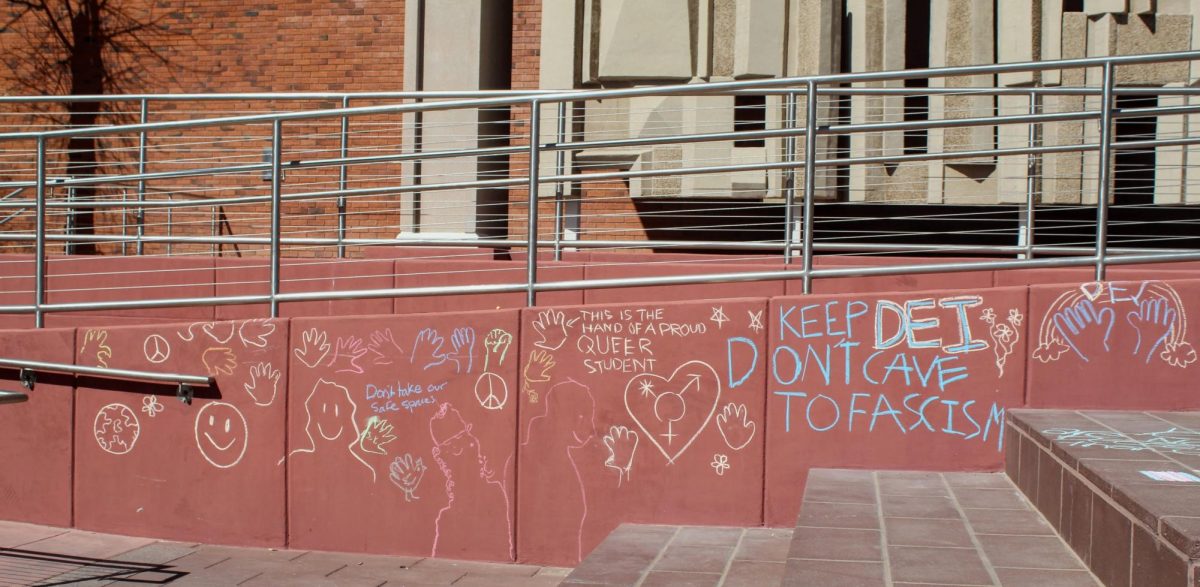The Arizona State Museum opened a new permanent exhibit, “Woven Through Time: American Treasures of Native American Basketry and Fiber Art,” Saturday, April 8, to spotlight Native American tradition in the Southwest.
Diane Dittemore, associate curator of ethnology, said the gallery intends to promote education and awareness about the ongoing custom and its significance within indigenous tribal cultures.
After extensive consultations with a number of basketry communities across the state, Dittemore said the museum prioritized the inclusion of native languages within displays.
RELATED: UA professor to update old native films by ‘tribesourcing’
“Our goal was to support tribal efforts in keeping language alive,” she said.
Terrol Drew Johnson, co-founder, president and CEO of Tohono O’odham Community Action, said weaving is an essential part of Native American culture. Johnson is also an award-winning basket weaver and co-founder of the Tohono O’odham Basketweavers Organization.
“We didn’t have Tupperware or pots, we had nature,” he said. “Learning how to pick up twigs, roots and branches to weave them into pieces to hold food was necessary.”

Johnson learned how to weave in high school, 30-some years ago, assuring his teachers that he would pass-on basketry to future generations. Johnson is now upholding true to that promise every Wednesday evening at the Desert Rain Gallery.
Although weaving popularity has declined among today’s youth because of the extensive effort required, Johnson said new people often attend the community’s free weaving circle with an open mind.
“Basket weaving is a dying art,” he said. “People are trying to keep it alive within their own communities by teaching younger people.”
RELATED: UA Special Collections Department preserves historic border materials
Ancient and modern art items from the Arizona State Museum’s collection of 35,000 baskets were donations from private owners, unearthed discoveries from anthropology excavations and purchases through the museum’s contribution fund, Friends of the ASM Collections.
A $400,000 grant from Save America’s Treasures program was given to the museum in 2001 to preserve their woven baskets and perishable fiber pieces. Funding from the federal government initiative was allocated towards construction of a climate-controlled storage vault, which includes a floor-to-ceiling display window.

The implementation of “Woven Through Time” took the Arizona State Museum’s basketry project conservative team and exhibit crew four years to plan, create and complete the present development.
Nancy Odegaard, head of preservation at the museum, has worked at the museum for 35 years. To enhance the historical state of the baskets, Odegaard and the conservation lab team examined, analyzed, treated and restored each basket, minimizing deterioration and potential damage.
Because of the support from Native American consultants, student interns, numerous sponsors and private contractors, “Woven Through Time” will educate the public about this cherished indigenous art and present recognition to the men and women who continue to weave.
Follow Tori Tom on Twitter.









